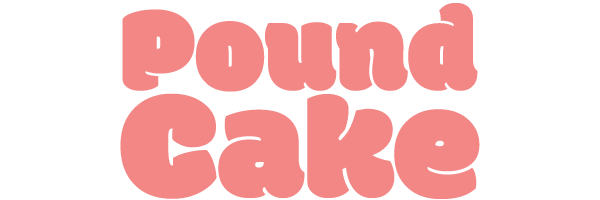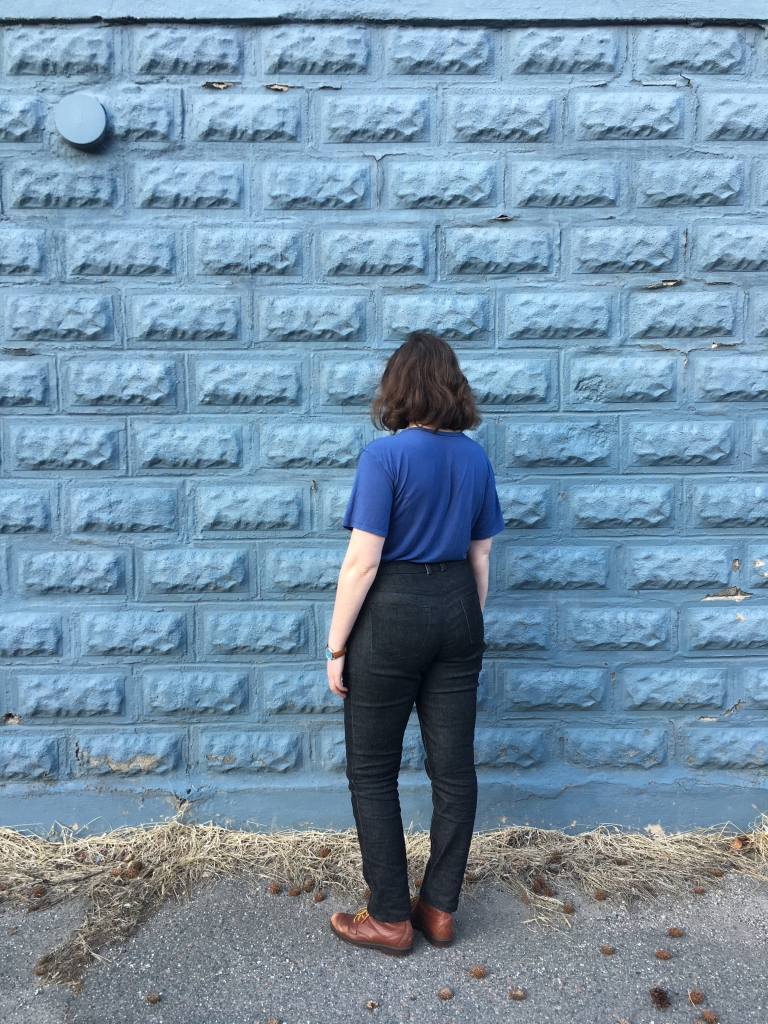I was excited to get reacquainted with my old pants post-partum. Many of my pants were excited to see me, too. However, several pairs will no longer know me, much in the manner of a cat after its person takes a vacation; but, since I’ve been wishin’ and hopin’ and thinkin’ about pants for the better part of the last year, it seemed like a marvelous excuse to sew new jeans anyway.



And because She’s Worth It, I also decided to use one of my two remaining pieces of US-produced Cone Mills denim. I think it’s 11 oz S-Gene in Indigo, and it was definitely a 1.5 yard cut. That’s how much denim I need to make a pair of Gingers – and when I ordered the denim in 2019, that was the only jeans pattern in my repertoire! My hopeful plan was to cut a pair of DJ Adams, to which the pattern’s yardage needs politely said hahaha very much no. Obviously I could have cut Gingers, but I felt like a different silhouette, so ultimately I chose the MN Dawns. It’s not a stretch pattern, but denim, even stretch denim, is pretty stable, so I wasn’t worried.
In fact, I prudently added an extra ¼” seam allowance to the outseams of my usual 14 waist, 16 hips (plus changes ahoy). That adds to the legs, pocket bag pieces, pocket facings, waistband, and yokes, so you best believe I wrote myself an all-caps Post-It (“ADD ¼!!!”) when I had to pause halfway through cutting and stuck it to the uncut paper pieces. I also extended the legs 1.5”, leaving only scraps of denim after cutting the straight-leg view.
I used a collection of quilting cotton leftovers for the pocket bags and inner waistband. In fact, this was a nothing-new-purchased project, which is why I have a button instead of a rivet. Actually, that’s a little disingenuous because of the denim, but it *was* a not-leaving-the-house project. By the way! Prewashing the denim in a baby laundry load dyed several of our diapers and burp clothes pale blue. Tasteful!
I was humming along sewing the front of the jeans when I realized I didn’t have any nine-inch zippers. I found a 7” metal zip buried in a box and resigned myself to using that instead. I always use 9” because it’s easier to sew without moving the pull up and down and out of the way, but as I discovered: moving the pull is actually pretty easy, too!

Plus, then I didn’t have to trim the tape to remove the metal teeth from inside the waistband. I’ll be buying 7” jeans zippers from now on – it takes a few more seconds during installation, but the result is tidier and more durable.
I grew-on my fly extensions and used the Ginger jeans method as per ush. Linked every time because I love it.
When the time came I basted the side seams with a 5/8” seam allowance, tried on the unfinished jeans, and liked them! I might have gotten the same result by sewing the un-added-to-version with 3/8” seam allowances, but it’s my unscientific, unsupported opinion that wide seam allowances, pressed open, help seams hang better.
I even liked the fit enough to have Professor Boyfriend place the pockets on my behind and take photos to optimize their position, a step I usually skip (as is obvious from the many rear-view pictures in which I’m always getting it a little bit wrong). At one point he said doubtfully “These are big pockets”, but my feeling is, you don’t use a small paintbrush to paint a big wall. My pockets are ½” larger on each side than the pattern, and I also attach them with a reduced sa.

That was the last major decision, so I cruised happily towards the finish line by attaching an extremely tidy waistband and then…picture a dolly zoom* (*caution: Jaws) and me yelling “GET OUT OF THE JEANS”.

My waistband measurement hasn’t changed, but its position has. It’s higher now. I just hated how that waistband, at that longitude, made the jeans hang. Also the waistband itself was too tall for its new compressed space! Booo!
I ripped it out before I could change my mind. I didn’t have a ton of denim left but I wanted a skinner waistband anyway. So I replaced it and restored the fit I liked with, shocker, a 1” finished straight waistband.

Cast your eyes yonder eastward and you may spot the place where I had to piece it! I also sewed the new waistband facing from quilting cotton scraps. This time I cut the pieced scraps on the bias, partly out of a vague sense of “comfortable???” but also because I had cut some bias strips already and they were just sitting there. This waistband doesn’t crumple even after multiple wears, probably because the combined seam allowances are as wide as the band’s finished width. The jeans sit one smidge lower than I usually wear pants, so the crotch is longer and crinklier, but hopefully in a faux-vintage way.
Just for fun, I added a selvedge tag. I typically object to tags in homemade clothes, but I couldn’t resist this little doodad. Here’s how to convert a sassy selvedge design to a possible source of skin irritation:
- Gather your supplies – a bit of selvedge with extra fabric to the sides and above your chosen motif, plus a leftover scrap of fusible hem tape from some Ikea curtains you bought in 2010 (not pictured because it was invisible against a white background).
- Fold the fabric right-sides-together and sew, not too close to the motif. Try guessing. Try guessing right (recommended!). Trim seam allowances to ½ the width of your finished tag.
- Center and press seam allowances open.
- Using a tool or your fingers, turn the tag right-sides out. Again, using a tool or your fingers, pull an appropriately-sized scrap of hem tape into the tube and smooth it so it lays flat, filling the space.
- Press again with heat and steam to seal.
- (This step is optional.) Decide the proportions are a little weird because the diamond isn’t centered vertically and despite the fact that the whole point of the selvedge was the SELF-EDGE, whack off a bit with your shears. And install.






My favorite way to wear these jeans is with the legs pegged. They look pretty different with a regular cuff or uncuffed.


What with our wonderfully long cool rainy spring they’ve been worn a lot already! I’m very pleased to have such a useful new pair of pants from a well-seasoned piece of yardage, plus whatever else I had lying around.

Now I have to put some serious thought into shorts.
–
Pattern: MN Dawns
Pattern cost: NA
Size: 14 waist, 16 hips plus changes + additional ¼” outseam allowance and 1 ½” hem allowance
Supplies: 1.5 yards of Cone Mills denim (Indigo, weight unknown), $30.00, Threadbare Fabric; cotton scraps; thread, zipper from stash, $1.40
Total time: 8.5 hours
Total cost: $31.40




































